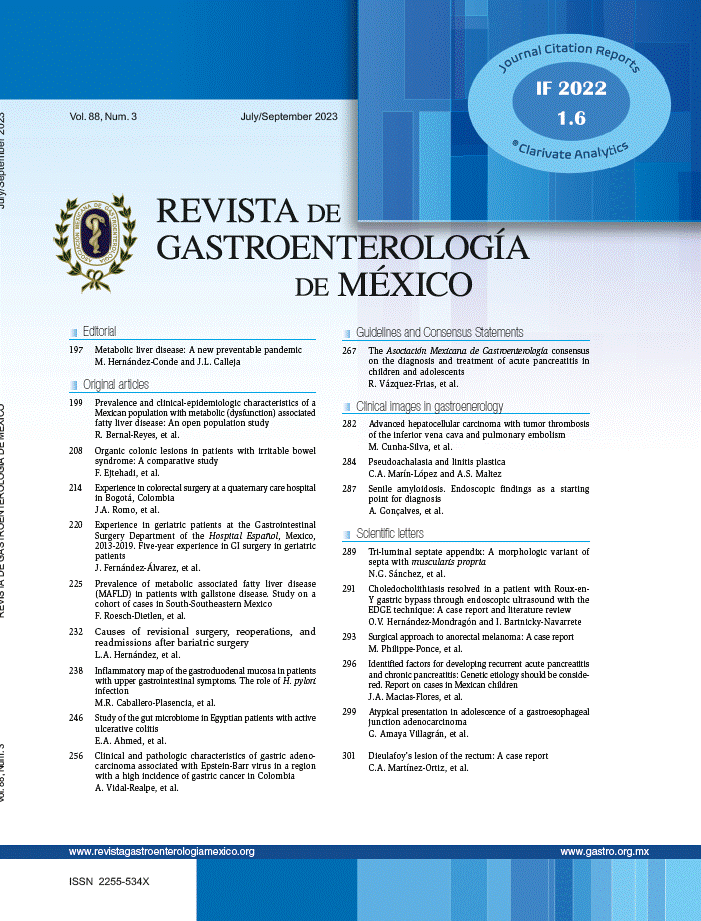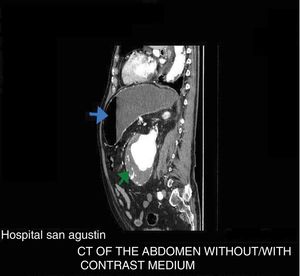An 89-year-old man came to the emergency department due to vomiting, pain, and bloating of 12h progression. Physical examination revealed a pulsatile abdominal mass. A computed tomography scan showed gastric retention (fig. 1, blue arrow) secondary to duodenal compression from a large abdominal aortic aneurysm (figs. 1 and 2, green arrow). A filiform duodenum (fig. 2, red arrow) was observed with proximal segment dilation and normalization of the caliber distal to the aneurysm. Duodenal compression from an abdominal aortic aneurysm is known as aortoduodenal syndrome. It is a very rare entity that usually presents with vomiting, weight loss and pain, and abdominal distension. It should be suspected in the presence of obstructive symptomatology and a pulsatile abdominal mass. Diagnosis and the ruling out of other causes are confirmed through contrast-enhanced abdominal CT scan. Treatment is based on initial stabilizing of the patient with fluid and electrolyte support and gastric decompression, so that later elective surgery can be performed.
Ethical disclosuresProtection of human and animal subjectsThe authors declare that no experiments were performed on humans or animals for this study.
Confidentiality of dataThe authors declare that they have followed the protocols of their work center on the publication of patient data.
Right to privacy and informed consentThe authors declare that no patient data appear in this article.
Financial disclosureNo financial support was received in relation to this article.
Conflict of interestThe authors declare that there is no conflict of interest.
Please cite this article as: Arenas-García V, Santos-Seoane SM, Argüelles-Martínez de la Vega C. Oclusión intestinal por aneurisma de aorta abdominal. Síndrome aortoduodenal. Revista de Gastroenterología de México. 2019;84:102–103.







